Triisopropylsilyl chloride
Synonym(s):Chlorotriisopropylsilane;TIPSCl;Triisopropylchlorosilane;Triisopropylsilyl chloride
- CAS NO.:13154-24-0
- Empirical Formula: C9H21ClSi
- Molecular Weight: 192.8
- MDL number: MFCD00009656
- EINECS: 603-492-0
- SAFETY DATA SHEET (SDS)
- Update Date: 2025-01-27 09:38:02

What is Triisopropylsilyl chloride?
Description
Triisopropyl chlorosilane is an important sterically hindered organosilicon protective agent, which is mainly used to protect various types of hydroxyl groups, especially in polyfunctional hydroxyl compounds, which can be selectively protected and deprotected. It is very important to synthesize nucleosides, nucleotides and carbohydrates. Triisopropylchlorosilane is a good hydroxyl protecting agent, and its silanization reaction is carried out in a slight excess of imidazole solution. The acid hydrolytic stability of the protected intermediate is between TBDMS and TBDPS and the alkaline hydrolytic stability is higher than the former two.
Chemical properties
Triisopropylsilyl chloride is colorless clear liquid
Physical properties
bp 198 °C/739 mmHg; d 0.901 g cm?3.
The Uses of Triisopropylsilyl chloride
Triisopropylsilyl chloride is used as a catalyst in the preparation of (silyloxy)cyclobutene derivatives. Also used in the addition of diethylzinc to N-diphenylphosphinoyl imines.
The Uses of Triisopropylsilyl chloride
Triisopropylsilyl Chloride is a valuable reagent for hydroxy protecting group; formation of triisopropylsilyl ynol ethers;N-protection of pyrroles; prevents chelation with Grignard reagents, including but not limited to Formation of Silyl Ynol Ethers, N-Protection of Pyrroles, Prevention of Chelation in Grignard Reactions, Protection of Terminal Alkynes, Protection of Pyrroles, Indoles, and Other Heterocycles,Preparation of “Supersilylating” Agents,Reactions with Hydrazine, Reactions with Other Nucleophiles etc.
The Uses of Triisopropylsilyl chloride
Chlorotriisopropylsilane is used as a silylating agent in neucleotide synthesis. It is used as an intermediate in the manufacture of chemical substances such as pharmaceuticals and in organic synthesis.
Preparation
There are two main methods for synthesizing triisopropyl chlorosilane. One is to use triisopropyl silane as a raw material, and hydrochloric acid and other reagents are used to chlorinate the hydrogen on the silicon. Another method uses silicon tetrachloride as raw material, and reacts with isopropyl lithium to obtain triisopropyl chlorosilane.
What are the applications of Application
Triisopropyl chlorosilane is mainly used as a basic intermediate in the synthesis of organic silicon materials and a blocking agent for silicone oil or silicone rubber. These triisopropylchlorosilanes can be used as raw materials for preparing functional silanes or silane coupling agents. In the reaction with organometallic compounds, the chlorine atoms of triisopropylchlorosilane are replaced by corresponding organic groups to form organochlorosilanes or organofunctional silanes.
Triisopropyl chlorosilane is mainly used in the production of aminosilane and methacryloxysilane, and can also be used as a rubber processing additive to couple inorganic fillers in various halogenated rubbers, such as neoprene rubber, chlorobutyl rubber , chlorosulfonated polyethylene and other halogenated rubbers. The existence of triisopropylchlorosilane can greatly improve various physical and mechanical properties of composites. Triisopropylchlorosilane can also be used to prepare antifungal and deodorant finishes with special bactericidal, deodorant, antistatic and surface-active properties.
Properties of Triisopropylsilyl chloride
| Boiling point: | 198 °C739 mm Hg(lit.) |
| Density | 0.901 g/mL at 25 °C(lit.) |
| vapor pressure | 1.16 mm Hg ( 20 °C) |
| refractive index | n |
| Flash point: | 145 °F |
| storage temp. | Inert atmosphere,2-8°C |
| solubility | Sol THF, DMF, CH2Cl2. |
| form | liquid |
| color | colorless |
| Specific Gravity | 0.903 |
| Water Solubility | Miscible with water. |
| Sensitive | Moisture Sensitive |
| Hydrolytic Sensitivity | 8: reacts rapidly with moisture, water, protic solvents |
| BRN | 1737446 |
| CAS DataBase Reference | 13154-24-0(CAS DataBase Reference) |
| NIST Chemistry Reference | Triisopropylsilyl chloride(13154-24-0) |
Safety information for Triisopropylsilyl chloride
| Signal word | Danger |
| Pictogram(s) |
 Corrosion Corrosives GHS05 |
| GHS Hazard Statements |
H314:Skin corrosion/irritation |
| Precautionary Statement Codes |
P280:Wear protective gloves/protective clothing/eye protection/face protection. P363:Wash contaminated clothing before reuse. P301+P330+P331:IF SWALLOWED: Rinse mouth. Do NOT induce vomiting. P303+P361+P353:IF ON SKIN (or hair): Remove/Take off Immediately all contaminated clothing. Rinse SKIN with water/shower. P305+P351+P338:IF IN EYES: Rinse cautiously with water for several minutes. Remove contact lenses, if present and easy to do. Continuerinsing. |
Computed Descriptors for Triisopropylsilyl chloride
| InChIKey | KQIADDMXRMTWHZ-UHFFFAOYSA-N |
Triisopropylsilyl chloride manufacturer
JSK Chemicals
New Products
1-Boc-4-cyanopiperidine tert-Butyl carbazate 1-(TERT-BUTOXYCARBONYL)-2-PYRROLIDINONE TETRABUTYLAMMONIUM CYANIDE TETRAHYDRO-2H-PYRAN-3-OL 3-Pyridineacrylic acid Nickel(II) perchlorate hexahydrate, 98% 4-Bromophenylacetonitrile, 95% 3-Bromo-4-fluoroaniline, 97% Sodium tetraborate decahydrate, 98% Palladium(II) acetate, trimer, Pd 99% 4-Bromo-2-chlorotoluene, 97% Tadalafil Clopidogrel bisulfate Sitagliptin Phosphate Monohydrate Cabergoline Fexofinadine HCl Etoricoxib 4-Amino Acetophenone 2-Chloro Acetophenone Amlodipine Base 2,3,5-Triiodobenzoic Acid Pyrrolidine Diiodo PentoxideRelated products of tetrahydrofuran
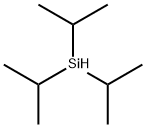
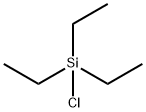
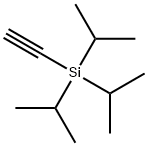
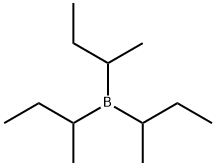
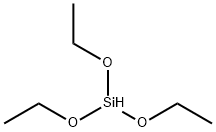

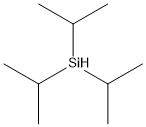
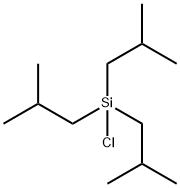
You may like
-
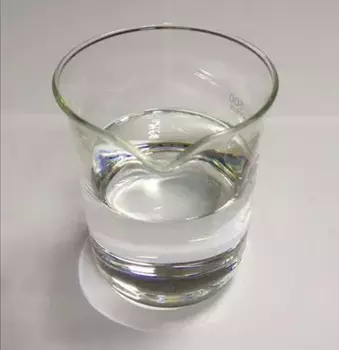 13154-24-0 98%View Details
13154-24-0 98%View Details
13154-24-0 -
 Chlorotriisopropylsilane 98%View Details
Chlorotriisopropylsilane 98%View Details
13154-24-0 -
 13154-24-0 Triisopropylsilyl chloride, 97% 99%View Details
13154-24-0 Triisopropylsilyl chloride, 97% 99%View Details
13154-24-0 -
 Triisopropylsilyl chloride CAS 13154-24-0View Details
Triisopropylsilyl chloride CAS 13154-24-0View Details
13154-24-0 -
 Triisopropylsilyl Chloride CAS 13154-24-0View Details
Triisopropylsilyl Chloride CAS 13154-24-0View Details
13154-24-0 -
 Triisopropylchlorosilane 98% CAS 13154-24-0View Details
Triisopropylchlorosilane 98% CAS 13154-24-0View Details
13154-24-0 -
 Triisopropylsilyl chloride CAS 13154-24-0View Details
Triisopropylsilyl chloride CAS 13154-24-0View Details
13154-24-0 -
 366789-02-8 Riveroxaban 98%View Details
366789-02-8 Riveroxaban 98%View Details
366789-02-8
